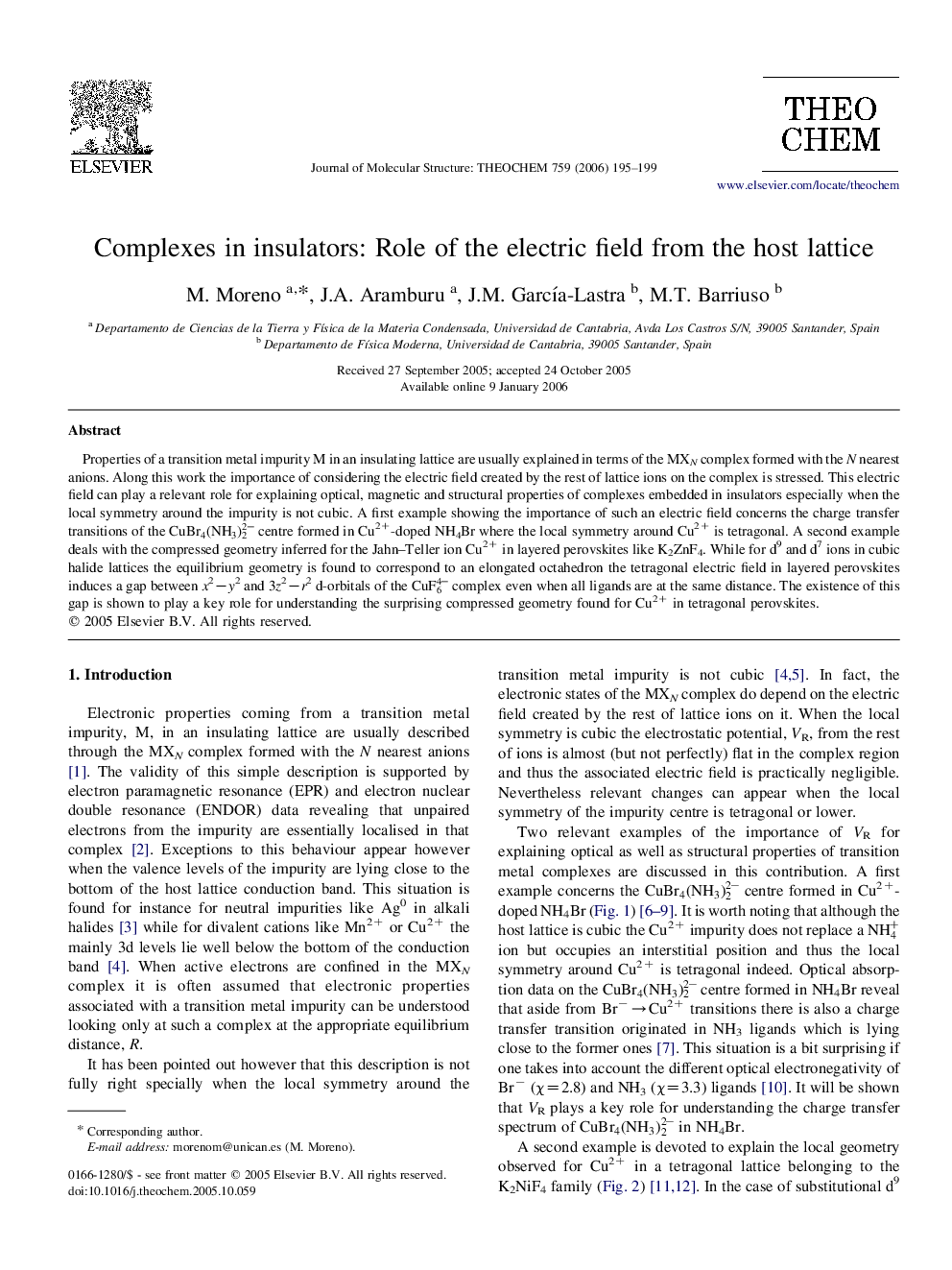| Article ID | Journal | Published Year | Pages | File Type |
|---|---|---|---|---|
| 5419192 | Journal of Molecular Structure: THEOCHEM | 2006 | 5 Pages |
Abstract
Properties of a transition metal impurity M in an insulating lattice are usually explained in terms of the MXN complex formed with the N nearest anions. Along this work the importance of considering the electric field created by the rest of lattice ions on the complex is stressed. This electric field can play a relevant role for explaining optical, magnetic and structural properties of complexes embedded in insulators especially when the local symmetry around the impurity is not cubic. A first example showing the importance of such an electric field concerns the charge transfer transitions of the CuBr4(NH3)22â centre formed in Cu2+-doped NH4Br where the local symmetry around Cu2+ is tetragonal. A second example deals with the compressed geometry inferred for the Jahn-Teller ion Cu2+ in layered perovskites like K2ZnF4. While for d9 and d7 ions in cubic halide lattices the equilibrium geometry is found to correspond to an elongated octahedron the tetragonal electric field in layered perovskites induces a gap between x2ây2 and 3z2âr2 d-orbitals of the CuF64â complex even when all ligands are at the same distance. The existence of this gap is shown to play a key role for understanding the surprising compressed geometry found for Cu2+ in tetragonal perovskites.
Related Topics
Physical Sciences and Engineering
Chemistry
Physical and Theoretical Chemistry
Authors
M. Moreno, J.A. Aramburu, J.M. GarcÃa-Lastra, M.T. Barriuso,
